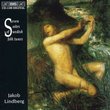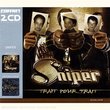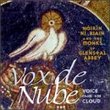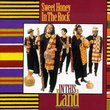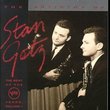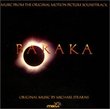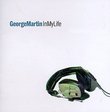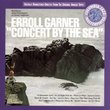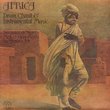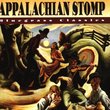| All Artists: Afghan / Tajik Traditional, Armenian Traditional, Azeri Traditional, Chinese Traditional, Iranian Traditional, Iranian / Afghan Traditional, Japanese Traditional, Kazakh Traditional, Kazakh / Mongol Traditional, Khakas Traditional, Kyrgyz Traditional, Mongolian Traditional, Qaraqalpak Traditional, Tajik / Uzbek / Bukharan Jewish Traditional, Turkish Traditional, Uyghur Traditional, Uzbek Traditional, Uzbek / Tajik Traditional, M. Salar Ahmadi Title: The Silk Road: A Musical Caravan Members Wishing: 2 Total Copies: 0 Label: Smithsonian Folkways Release Date: 4/23/2002 Genres: International Music, Special Interest, Pop Style: Number of Discs: 2 SwapaCD Credits: 2 UPC: 093074043820 |
Search - Afghan / Tajik Traditional, Armenian Traditional, Azeri Traditional :: The Silk Road: A Musical Caravan
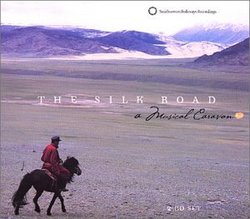 | Afghan / Tajik Traditional, Armenian Traditional, Azeri Traditional The Silk Road: A Musical Caravan Genres: International Music, Special Interest, Pop
What if Marco Polo had owned a tape recorder? And what if his epic travels along the Silk Road had taken place not at the end of the 13th century, but at the beginning of the 21st? Far-fetched conjectures to be sure, but o... more » |
Larger Image |
CD DetailsSynopsis
Album Description What if Marco Polo had owned a tape recorder? And what if his epic travels along the Silk Road had taken place not at the end of the 13th century, but at the beginning of the 21st? Far-fetched conjectures to be sure, but our compilation The Silk Road: A Musical Caravan offers a glimpse of the rich musical life that an intrepid and curious traveler like Marco Polo might find in the lands of the Silk Road today. Similar CDsSimilarly Requested CDs
|
CD ReviewsMusic from the Steppes and Deserts Zekeriyah | Chicago, IL | 06/01/2003 (5 out of 5 stars) "This is a wonderful two CD set of music covering the traditions of the Silk Road. Althugh it includes pieces of Chinese, Persian, Turkish, Azeri, Japanese and Armenian origin, this CD's focus remains strongly tilted towards the musical traditions of Central Asia; Afghanistan, Tajikstan, Uzbekestan, Turkestan, Mongolia and so forth. This is very much the tradition of steppe nomads, merchants and traders. While listening to the CD, you can see as much of an influence from outside sources such as Arabic, Persian, Turkish, Chinese and Indian traditions, as you can from traditional Central Asian sources. After all, for many centuries the Silk Road provided a trade route between the West and East, so this should not come as any surprise. The first CD fouses on traditional, classical styles. In it, we are presented with some truely beautiful and emotional pieces. The Dance of Tamir Agha is truely exotic and seductive. Uchun Dur is majestic and inspiring. The Lullaby from Itsuki and Jiu Kuang express the calm, melodious sounds of East Asia. Mokhalef and Shushtari give wonderful examples of how wonderful Persian music is. And the River Herlen is just magnificent. All of these songs are positively breath taking. The second CD continues this, giving examples of folk music and religious music. Tjeresa Kazakh Jew's Harp melody, which is simple but intrigueing; part of the Alpamish Epic, which is a mournful but beautiful song; and several other examples of Nomadic folk singing. Then, we are treated with several examples of music from festivals, including "Mizghan-i-Siyah", an Azeri love song and "Charzarb". Finally, it rounds out with religious music, combining steppe nomad's animism with mystical Islam. Included here is a Kazakh song drawing upon the ancestors; a Kyrgyz wisdom song; a performance of the Sufi zikr; the Turkish Alevi mystics and the moving "Allah Madad" from Iran/Afghanistan. All I can say is that if you appreciate the classical, folk and religious musics of Asia or the Middle East, then you would certainly appreciate this CD. Buy it as soon as you get a chance." Good collection containing unique music from all over! Bob from the Midwest | 08/29/2002 (4 out of 5 stars) "I love the second disc. The first disk was not the best and seemed to consist entirely of the same type/meter of music. This is an ethnographic collection, however, so I understand that they are sampling all sorts of musicians from the same general (actually huge) geographic area, many of which share the same musical roots.To return to disc 2 - wonderful variety and worth the price just for it. The first 4 songs are especially wonderful and contain mongolian throat singing - track 4 has got to be my favorite.The vast majority the songs are string instrument/percussion based, with a few flute songs thrown in. There are no longs in english, so don't buy the connection if you want to understand the words! To me, that is part of the charm!" Northern Exposure Dr. Debra Jan Bibel | Oakland, CA USA | 03/29/2007 (5 out of 5 stars) "This anthology is an outstanding survey of the northern section of the so-called Silk Road, taking us from Turkey, Azerbaijan,and Iran, through Uzbekistan, southern Siberia, China, and finally to Japan, but not in order, as the CD set is organized instead by category of musical function and the localities seem random. Although there are significant gaps in the styles, and I particularly miss the sweet lyric songs of Kyrgyz women, the powerful mugham voice of Qasimov of Azerbaijan, and more examples of the kylkobyz fiddle of Kzakhstan, the set provides a fine introduction of the musics of inner Asia and particularly the instruments. A glossary of instruments is provided, but unfortunately their images are often lacking. All the examples are short by necessity, when many traditional pieces are far longer in duration. For the uninitiated, it will take repeated listening to distinguish the uniqueness of timbre and rhythm from one land to the other; but this similarity of sounds helps demonstrate the role of the trade routes in sharing instruments and styles, such that the Japanese biwa, the Chinese pipa, and the Arabic oud all are related. If you want to attain some feel for the musics of inner Asia, then certainly these disks will meet the requirement."
|

 Track Listings (24) - Disc #1
Track Listings (24) - Disc #1